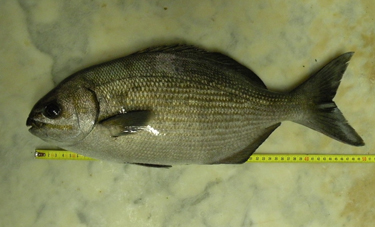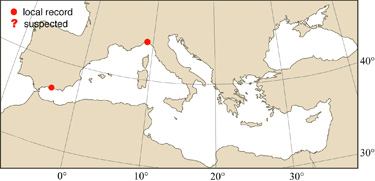
|
Relevant synonyms
Misidentification
Meristic formula
|
|
| Photo: Maria Rosa Costa |
|
SHORT
DESCRIPTION
color : olive brown with longitudinal golden stripes on algal beds; bluish in pelagic environments. Two golden bands on the head, separated by a silver stripe under the eye.
size : common to 40-50 cm; largest size 91 cm (Gulf of Mexico). |
DISTINGUISHING CHARACTERISTICS
BIOLOGY / ECOLOGY
habitat : surface offshore waters (juveniles) and algal beds in coastal waters (adults). |
|
1st
MEDITERRANEAN RECORD
|

|
|
DISTRIBUTION
|
ESTABLISHMENT SUCCESS
|
|
MODE OF
INTRODUCTION |
IMPORTANCE TO
HUMANS |
|
KEY
REFERENCES
|